Every time you start your car, you might notice that all warning lights on the instrument panel light up as part of the pre-ignition sequence, only to turn off once the engine is already idling; one of these lights pertain to the car’s traction control system (TCS), if your vehicle is so equipped.
What is traction control anyway? Is it necessary for a car? Is it safe to drive the car when the TCS lamp is on? Philkotse.com answers your queries in this article.
1. Understanding TCS
The traction control system on a car, simply put, is responsible for preventing the loss of traction on the drive wheels, whether it’s the rear (RWD), front (FWD) or all four wheels (AWD).
Traction control works in tandem with the anti-lock braking system (ABS) to regulate the excess spin of the slipping wheel, as well as the engine control system to reroute the power output towards the wheels that are turning normally.
Compared to the more sophisticated electronic stability program, traction control is relatively simple as it only serves to detect when one wheel is spinning faster than the others, due to differences on the road surface.
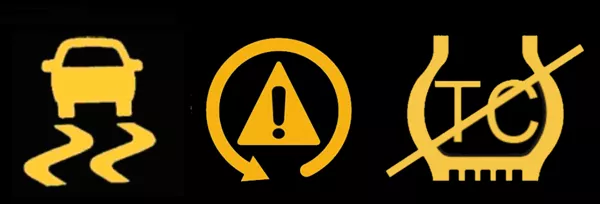
TCS stands for Traction Control System
On a slippery highway, for example, one wheel might end up rotating faster (and therefore having less traction) than the rest; this can potentially send the vehicle into a spin.
Traction control aims to prevent this by signaling the control unit to apply brake pressure on the slipping wheel, allowing the remaining wheels to catch up with the necessary traction. On AWD cars, an electronic coupling system is used instead to divert power towards the wheels that have more grip.

Traction control also helps the car turn in corners safely
Traction control also helps the car turn in corners safely. Excessive throttle input during cornering will make the drive wheels lose traction and slide in a sideways motion; this is referred to as understeer in FWD vehicles and oversteer in RWD ones.
This is prevented when traction control steps in to regulate the power going to the wheels, applying the brakes when necessary so that the car slows down enough to regain a grip on the road surface. Much like the electronic stability program, traction control shouldn’t be used as an excuse to exceed either the car’s technical limits or the driver’s abilities.
2. Main reasons for the TCS warning light
Is a TCS warning light coming on a sign of trouble? The short answer is, it depends. Below are some of the reasons why the TCS light might turn on while you’re driving.
Flashing or blinking TCS light when accelerating
If the TCS warning lights up as you accelerate, it could mean that the road is slippery and your wheels are spinning. Remember that it’s normal for the TCS light to flash if you are driving on a slippery or muddy surface. However, if the light flashes and the car’s engine noticeably reduces power even over normal road conditions, it could indicate a faulty ABS sensor.
Such a problem could feed erroneous data, interpreting the wheels slipping when they’re actually not. You can resolve the issue by reading the trouble codes from the ABS control unit and determine which of its sensors is malfunctioning.
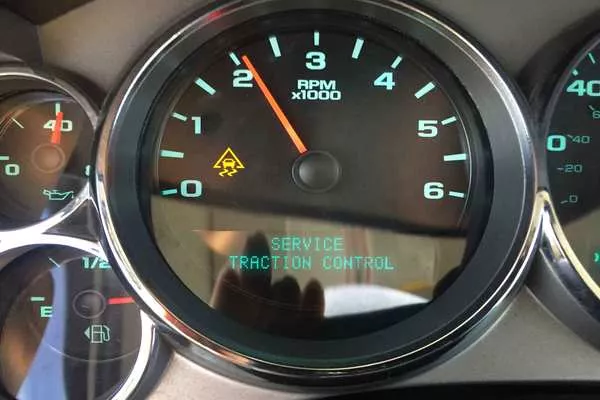
The TCS light flashes several times if you are driving on a slippery or muddy surface
Constant TCS light with the word “OFF”
If the TCS light is constantly flashing and accompanied the word “OFF” underneath, it means that the car’s traction control has been deactivated. Some cars have a manual override function on their traction control systems, enabling drivers to turn the feature off or back on.
You can check your car’s service manual to locate the TCS button or switch and engage the system. If this doesn’t resolve the issue, the problem might be within the mechanism itself.
>>> Check out: 6 Important Car Warning Signs On The Dashboard.
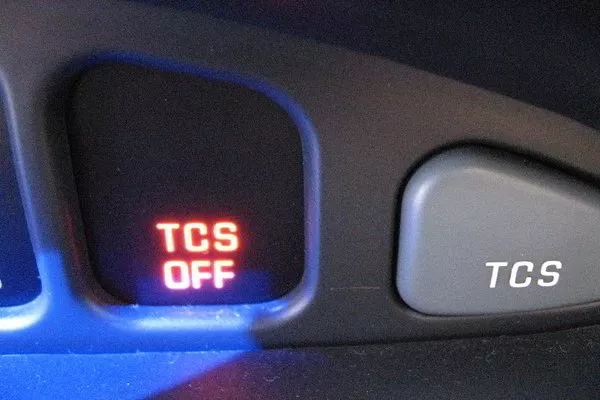
If you see this warning light on your instrument panel, you’ll need to turn the TCS back on
TCS light constantly flashing
When TCS icon lights up constantly, accompanied by the ABS warning light, this could indicate a problem in the traction control system, with a corresponding trouble code in the ABS control unit. Reading and deciphering these trouble codes requires an onboard diagnostics (OBD2) scanner.
Professional auto shops will have this on-hand as part of their services, or you can buy your own scanner and plug it into the OBD port located underneath the dashboard. Many consumer OBD2 scanners work with a mobile app, enabling them to wirelessly display pertinent information on a smartphone.
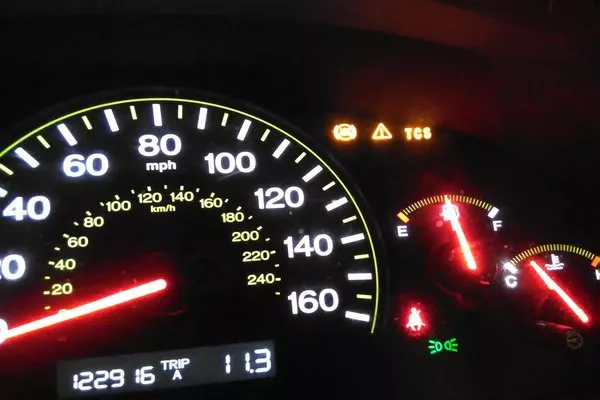
When the TCS and ABS lights come on at the same time, the car may no longer be safe to drive
When both the TCS and ABS light come on, it could also mean that the brakes have lost their antilock feature; the car can still slow down, but the wheels will lock when brake pressure is applied, compromising safety and maneuverability.
3. Other reasons for an illuminating TCS light
There are other factors that can cause a TCS warning light to turn on, even when outside conditions don’t require the use of TCS. These are:
- Malfunctioning anti-lock braking system control unit
- Steering position sensors
- Wiring problems of ABS control module
- Failing the ABS ring or magnetic ring
As you can see, most of them involve a fault with the antilock brake system, considering that traction control reduces power to a slipping wheel through the brakes.
4. What happens if you drive the vehicle with an illuminating TCS light?
The TCS icon lighting up on the instrument panel for extended periods doesn’t necessarily render the car undrivable, although safety is somehow compromised; the car’s ability to detect the conditions necessary to engage traction control has been impaired.
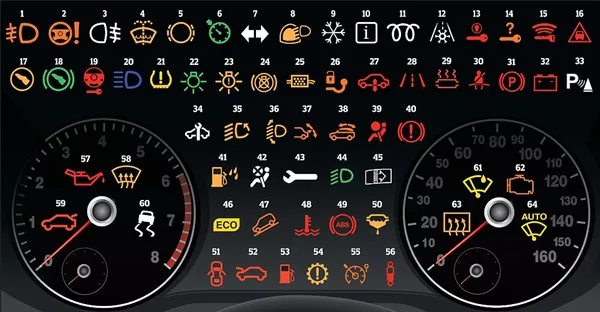
The car’s ability to detect the conditions necessary to engage traction control has been impaired
The worst-case scenario is that the car shuts down traction control altogether, and you’ll have to anticipate the risk of excessive wheel spin when driving on slippery surfaces or tackling a turn at speed. There’ll be no way for the car to regulate engine power being transmitted to the drive wheels, which can result in serious accidents.
In rare cases, the TCS icon lighting up is also an indication of engine problems. Whatever the case, it’s always prudent to have the problem looked into as soon as possible.
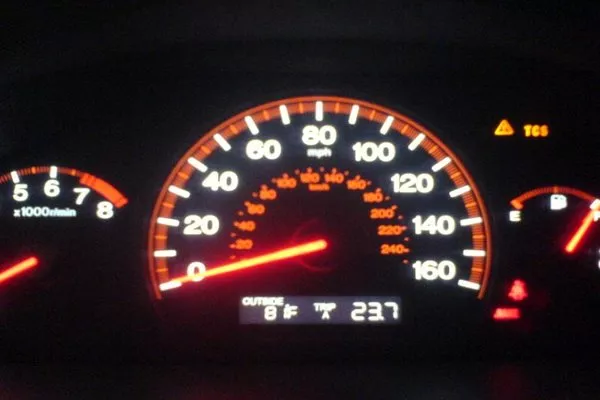
Driving with the TCS light on, even in normal conditions, doesn’t exactly inspire confidence
Recent posts
- 13 less popular car features that are found in cars yet vital Jan 26, 2021
- 9 essential car features that you need to know before taking the wheel Aug 16, 2022
- 5 important things you should know about car traction control Jun 09, 2021
- 6 steps for problem-free dashboard lights Aug 16, 2022
- Driver-assistance features and a peace of mind! Oct 04, 2018












